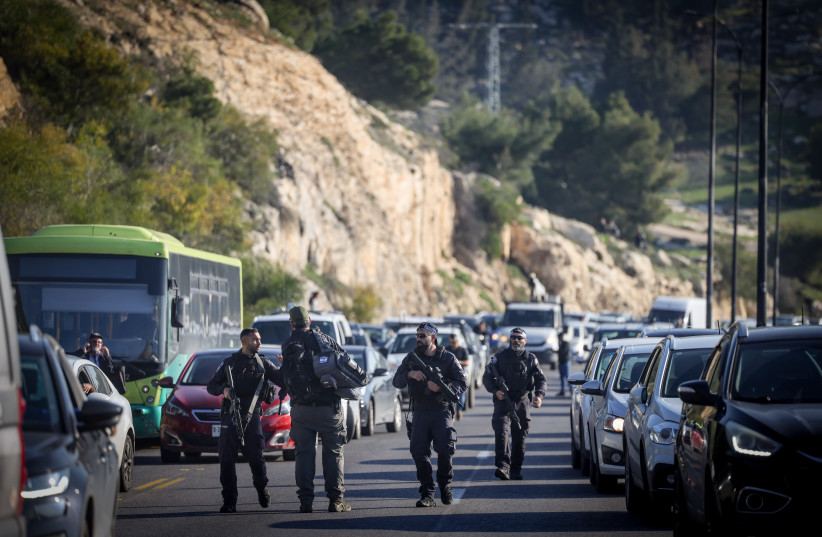The terror attack near Ma'aleh Adumim left many questions unanswered.
The IDF has torn apart 18 out of 24 Hamas battalions in Gaza, with the other six basically cornered and surrounded.
In the West Bank, the military has arrested a staggering 3,200 suspected terrorists since October 7, seized 230 weapons, and demolished 17 houses of terrorists.
To put those numbers in perspective, the goal of the IDF’s “massive” operation in Jenin on July 3-4, 2023, was to arrest 300 most-wanted terrorists.
In other words, the IDF’s raids these last few months have been 10 times larger than an operation that was already labeled as “massive.”
If all of that is true, how did three terrorists manage to get weapons and open fire on a large crowd of Israeli motorists near Maaleh Adumim?

Who took credit?
Recent polls have even suggested that Hamas is now more popular in the West Bank than in Gaza, whereas Fatah, the West Bank ruler, is normally far more popular or in a dead heat, and Hamas is more popular in Gaza.
Both Hamas and Palestinian Islamic Jihad issued press releases praising the three terrorists, but neither took credit.
Might they avoid taking credit now out of fear of reprisals at a time when the IDF has taken off the kid gloves, or was their not taking responsibility because the three really did act alone?
And if they did act alone, how did they manage to get so many weapons and organize themselves in such a sophisticated fashion to all attack simultaneously in a crowded area?
On the other hand, the fact that the terrorists shot wildly and without much focus seemed to make the casualty number lower than it would have been had they been more disciplined.
This could suggest they were moderately organized, but still amateurs.
All of these though are tactical limits.
The strategic limit is some kind of diplomatic horizon, whatever that might be.
Until this war, it could have been said that if only the IDF would take off the gloves, terrorism would be stopped.
The army did take the gloves off – and threw them out the window – but there is still terrorism, albeit probably less than there was pre-war.
A very large portion of the harder-core terrorists, probably the largest in years, have been killed or arrested.
Some terrorism, like antisemitism, may always exist. Some people just hate Jews.
But defense officials have been worried for months, since northern Gaza fell, that Israel must start giving some “carrot” and diplomatic horizon to the Palestinians, and not just using the “stick.”
Whatever that horizon might be, whatever Israel’s vision is for “The Day After” in both Gaza and the West Bank, defense officials worry that failing to start moving in that direction will lead to Israel losing ground in terms of security and safety.
